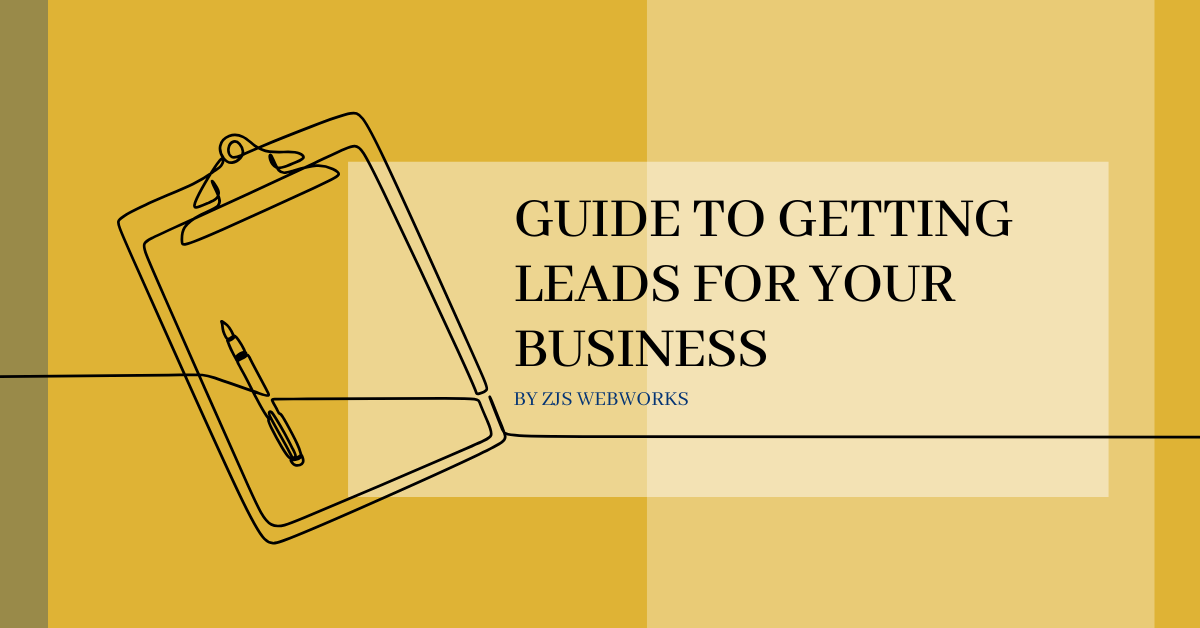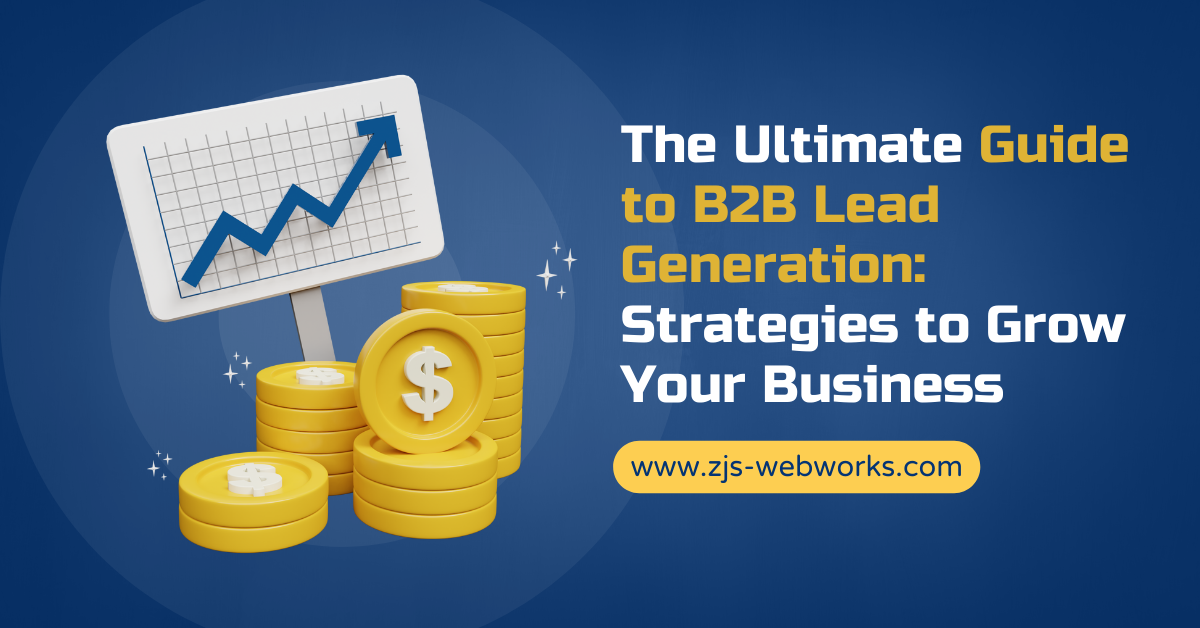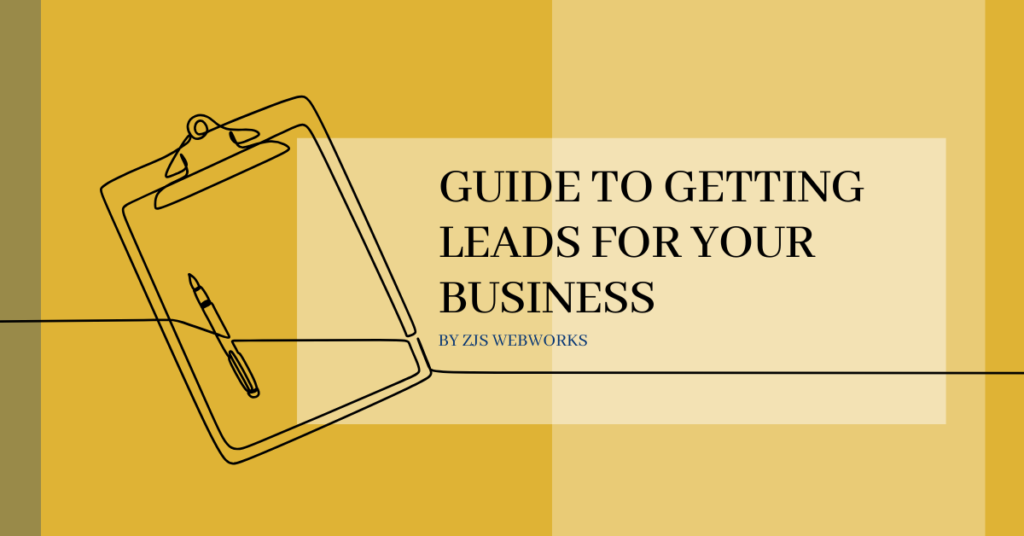
Generating leads is the lifeblood of any business, regardless of industry or size. Whether you run a small startup or a large enterprise, understanding how to consistently attract and convert potential customers is essential for growth. In this detailed guide, we’ll explore proven strategies, actionable tips, and expert insights to help you answer the question, “How do I get leads for my business?” From leveraging digital platforms to building offline relationships, this comprehensive guide has you covered.
Table of Contents
ToggleWhat Does “Getting Leads” Mean?
Before diving into strategies, let’s clarify what lead generation entails. A lead is any individual or business interested in your product or service. Lead generation is the process of attracting these individuals, capturing their interest, and guiding them toward becoming customers. It’s not just about quantity—generating high-quality leads that are likely to convert is equally important.
Why Lead Generation is Vital
Lead generation fuels your business pipeline, ensuring that you have a steady stream of prospects to engage and convert. Without consistent lead generation, businesses risk stagnation, reduced revenue, and losing ground to competitors. It helps businesses:
Sustain Long-Term Growth: A steady influx of leads prevents revenue plateaus.
Boost Sales Opportunities: More qualified leads increase the likelihood of conversions.
Establish Authority: Effective strategies position you as an industry leader.
Common Misconceptions About Lead Generation
Leads Automatically Mean Sales: Not all leads will convert immediately. Nurturing plays a critical role in turning potential leads into paying customers. This process often involves providing value and building trust over time.
It’s Only for Big Businesses: Small businesses and startups benefit equally, if not more, from focused lead generation strategies. Every lead counts, especially when resources are limited.
One Size Fits All: Each business has unique needs and requires tailored approaches. Strategies that work for a large enterprise may not be as effective for a local service provider.
Types of Leads
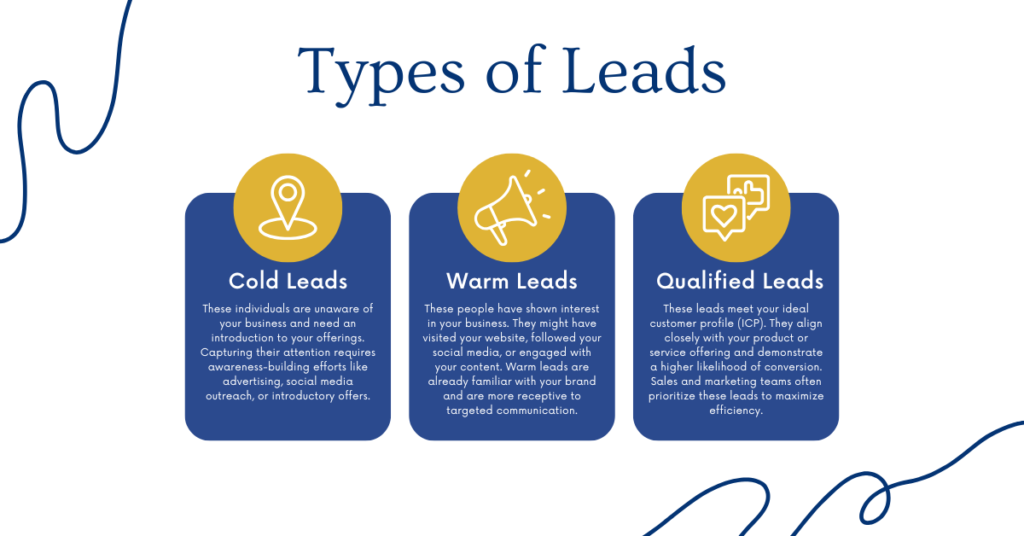
- Cold Leads: These individuals are unaware of your business and need an introduction to your offerings. Capturing their attention requires awareness-building efforts like advertising, social media outreach, or introductory offers.
- Warm Leads: These people have shown interest in your business. They might have visited your website, followed your social media, or engaged with your content. Warm leads are already familiar with your brand and are more receptive to targeted communication.
- Qualified Leads: These leads meet your ideal customer profile (ICP). They align closely with your product or service offering and demonstrate a higher likelihood of conversion. Sales and marketing teams often prioritize these leads to maximize efficiency.
The Lead Generation Funnel
Lead generation typically follows a funnel structure, with strategies designed for each stage:
Awareness Stage: At this stage, potential leads become aware of your business through efforts such as digital advertising, search engine optimization (SEO), and engaging social media content.
Consideration Stage: Leads evaluate your product or service. They often compare it to competitors and explore how it addresses their needs. Strategies like case studies, webinars, and customer reviews can provide persuasive evidence at this stage.
Decision Stage: At this point, leads decide whether to purchase your product or engage with your service. Offering incentives, discounts, or detailed product demonstrations can push them toward conversion.
Example:
Imagine you own an eco-friendly cleaning product business:
Awareness: Run a series of ads highlighting the environmental benefits of your products.
Consideration: Provide testimonials from satisfied customers or scientific data proving the product’s effectiveness.
Decision: Offer a 20% discount for first-time buyers to encourage immediate action.
Real-World Benefits of Effective Lead Generation
Lead generation offers tangible benefits that directly impact a business’s success:
Increased Revenue: Consistently capturing qualified leads naturally leads to higher sales figures.
Improved ROI: When lead generation is well-targeted, marketing resources are utilized efficiently, reducing wasted spend.
Enhanced Brand Awareness: Engaging campaigns and content introduce your brand to a wider audience, reinforcing recognition and credibility.
Expert Insight
According to marketing consultant John Smith: “Lead generation is more than just capturing emails. It’s about creating meaningful interactions that build trust and guide prospects down the sales funnel.”
Lead generation is both an art and a science. Combining creative outreach with data-driven insights ensures your strategies are effective and scalable. With this foundation laid, let’s dive into actionable steps to attract high-quality leads consistently.
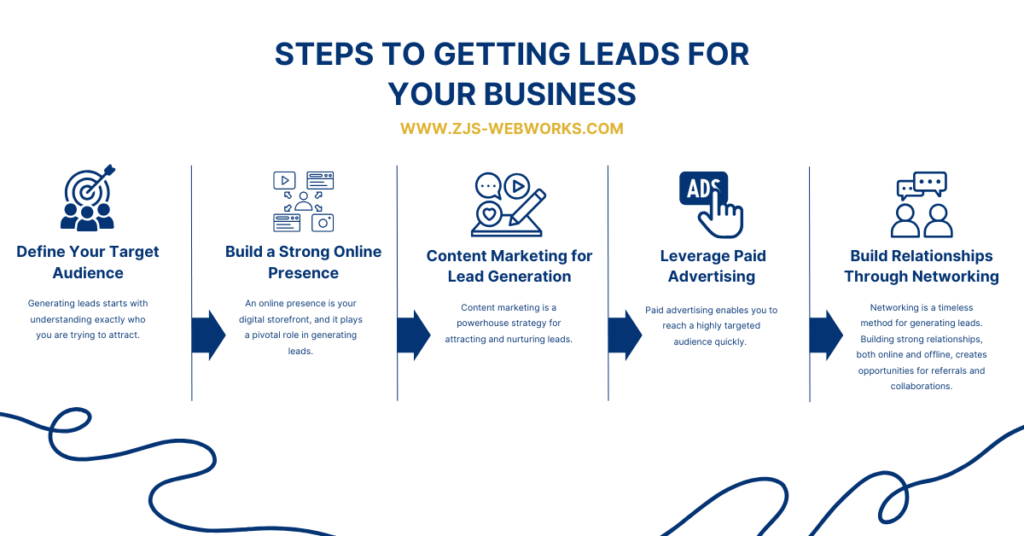
Step 1: Define Your Target Audience
Generating leads starts with understanding exactly who you are trying to attract. Without a clear picture of your target audience, your efforts will lack focus, efficiency, and ultimately effectiveness.
How to Identify Your Target Audience:
Analyze Current Customers: Study your existing client base to identify common traits such as age, location, profession, purchasing behaviors, and pain points. This data can offer invaluable insights into who values your product or service.
Create Buyer Personas: Develop detailed profiles of your ideal customers. Include their challenges, goals, motivations, and buying habits. The more specific these personas are, the better you can tailor your marketing messages.
Leverage Analytics: Use tools like Google Analytics, Facebook Audience Insights, or your CRM system to understand audience demographics and behaviors. Look for patterns in engagement metrics such as bounce rates, click-through rates, and conversion rates.
Example:
If you own a fitness studio, your target audience might include professionals aged 25-40 who value convenience and wellness. Consider their unique pain points—perhaps they lack time for extended workouts—and tailor your offerings, such as 30-minute express classes, to address these needs.
In-Depth Analysis:
Analyzing your competitors can also provide clarity. Look at their reviews, audience demographics, and communication styles. Identify gaps they aren’t addressing and position your brand to fill those voids.
Step 2: Build a Strong Online Presence
An online presence is your digital storefront, and it plays a pivotal role in generating leads. A well-crafted online presence ensures potential leads can find, trust, and engage with your business.
Website Optimization
Your website should be optimized to capture leads effectively:
Clear Call-to-Actions (CTAs): Place CTAs strategically on every page, such as “Get a Free Quote” or “Download Our Guide.”
Mobile-Friendly Design: Ensure your website is responsive and loads quickly on all devices.
Landing Pages: Create dedicated landing pages with forms to capture lead information in exchange for valuable resources.
Example:
A photography business could offer a “Free Wedding Photography Checklist” as a downloadable guide, collecting contact details in the process.
Social Media Engagement
Social media platforms are invaluable for building relationships with potential leads. Engage your audience by sharing content, responding to comments, and using targeted advertising.
Facebook Ads: Use precise targeting to reach your ideal audience.
LinkedIn Outreach: Connect with decision-makers and share professional insights.
Instagram Stories: Showcase behind-the-scenes content to humanize your brand.
Step 3: Content Marketing for Lead Generation
Content marketing is a powerhouse strategy for attracting and nurturing leads. By offering valuable, informative, and engaging content, you position your business as a trusted authority in your industry.
Types of Content to Create
Blogs: Write in-depth articles addressing common questions or challenges faced by your audience. Include actionable tips and insights that demonstrate your expertise.
Videos: Create tutorial videos, product demonstrations, or thought leadership interviews to engage your audience visually.
Ebooks and Whitepapers: Offer long-form, downloadable content that dives deep into a specific topic. Use these as lead magnets to capture email addresses.
Example:
A real estate agent could create a blog titled “Top 10 Tips for First-Time Homebuyers” and include a CTA for a free homebuyer checklist.
Distribution Channels
Once your content is created, distribute it effectively:
Social Media Platforms: Share your content on platforms like LinkedIn, Facebook, and Twitter to reach a broader audience.
Email Campaigns: Send your content directly to your subscribers, nurturing them over time.
Guest Blogging: Write for industry-related websites to tap into their established audiences.
Step 4: Leverage Paid Advertising
Paid advertising enables you to reach a highly targeted audience quickly. Platforms like Google Ads and Facebook Ads offer robust targeting tools that help you connect with the right people at the right time.
Google Ads
With Google Ads, you can target users actively searching for your product or service:
Keyword Targeting: Bid on keywords your audience is searching for, such as “best CRM software” or “local plumbing services.”
Geotargeting: Focus on specific regions or cities to attract local customers.
Example:
A plumbing business might run ads targeting “emergency plumber near me” to capture high-intent searches.
Social Media Advertising
Leverage the advanced targeting features of social platforms:
Lookalike Audiences: Use your existing customer data to find similar prospects.
Retargeting Campaigns: Re-engage website visitors who didn’t convert on their first visit.
Example:
A clothing brand could run Instagram retargeting ads showcasing items a user previously viewed, encouraging them to complete their purchase.
Step 5: Build Relationships Through Networking
Networking is a timeless method for generating leads. Building strong relationships, both online and offline, creates opportunities for referrals and collaborations.
Attend Events and Conferences
Industry-Specific Events: Participate in trade shows, expos, or conferences relevant to your niche.
Local Meetups: Engage with your local community to establish personal connections.
Example:
A graphic designer might attend a small business networking event and connect with entrepreneurs in need of branding services.
Partnerships and Referrals
Collaborate with complementary businesses to share leads and referrals.
Example:
A wedding photographer could partner with a florist and caterer to create a mutual referral network.
Step 6: Create a Referral Program
Referral programs leverage the power of word-of-mouth marketing. Happy customers are often willing to recommend your business, especially if incentivized.
How to Build a Referral Program
Offer Rewards: Provide discounts, free products, or exclusive perks for successful referrals.
Simplify the Process: Use referral tracking software to make it easy for customers to share and track referrals.
Promote the Program: Advertise your referral program on social media, your website, and email campaigns.
Example:
A software company could offer a 10% discount to both the referrer and the referee for every new sign-up.
Step 7: Track and Measure Success
Tracking your lead generation efforts ensures you know what’s working and where to improve.
Metrics to Monitor
Conversion Rates: Track how many leads turn into paying customers.
Cost per Lead (CPL): Measure how much you’re spending to acquire each lead.
Lead Quality: Evaluate whether your leads align with your ideal customer profile.
Tools to Use
Google Analytics: Monitor website traffic and conversions.
CRM Software: Track interactions and manage your leads efficiently.
By implementing these strategies step-by-step, you can build a robust pipeline of high-quality leads to fuel your business growth. Tailor each tactic to your specific needs and resources, and watch as your lead generation efforts drive tangible results.

